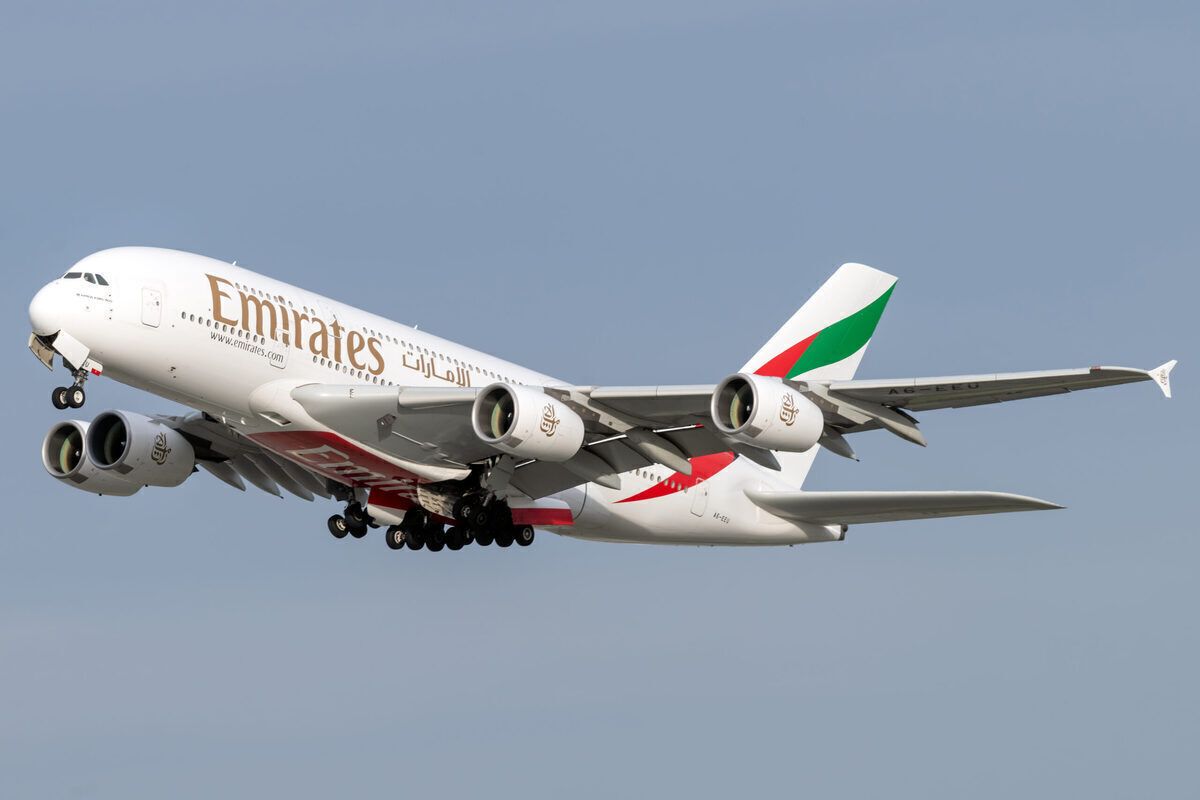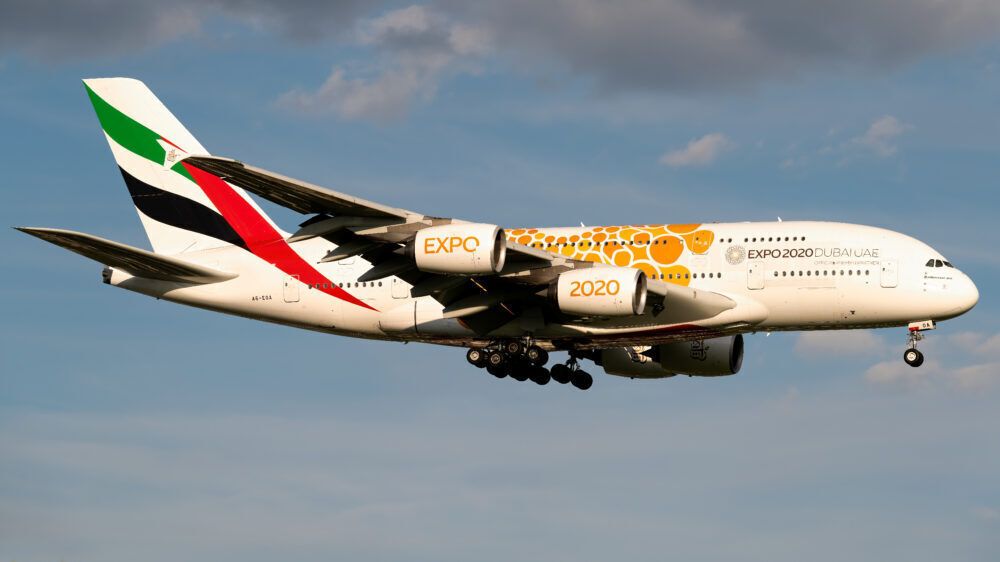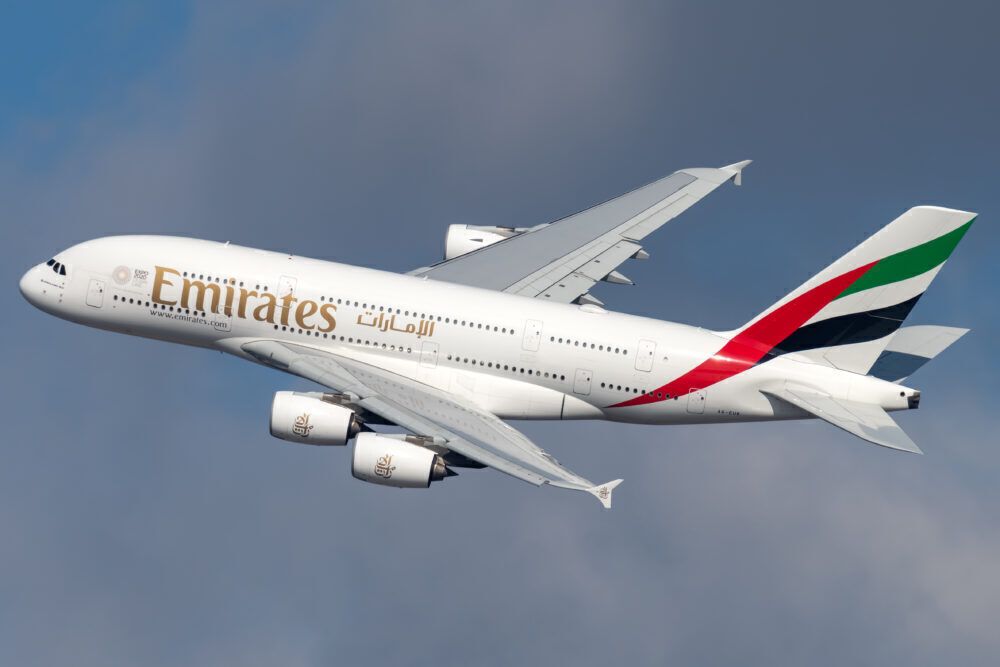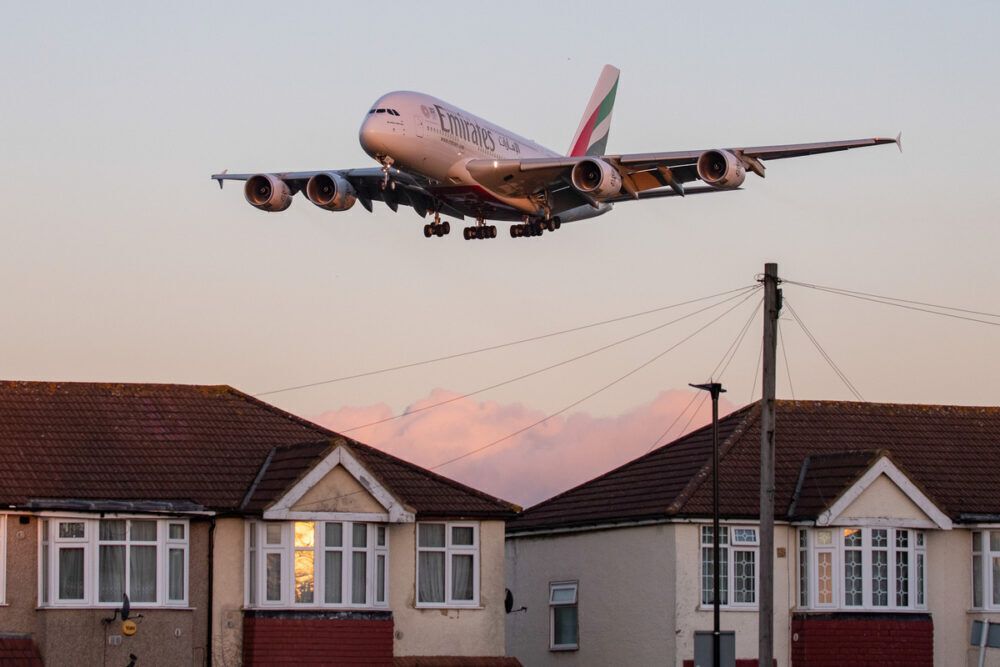Emirates is widely known for being by far the world's largest operator of Airbus's double-decker A380 quadjet. While several airlines have fallen out of love with the superjumbo in recent years, particularly amid the coronavirus pandemic, the UAE flag carrier has retained a close relationship with the type. But why exactly did the Dubai-based airline order so many?
Crunching the numbers
Before answering this question, we should start by establishing just how many A380s Emirates ordered. At present, the airline has ordered a total of 123 A380s, of which it has received 121. It placed these orders between 2000 and 2018, with the largest being a 50-plane order in 2013.
Data from ch-aviation.com shows that the A380s in Emirates' fleet at this time had an average age of 6.9 years old. It is worth noting as well that, owing to the impacts of the coronavirus pandemic on the world of commercial aviation, just 20 were active.
The importance of Emirates as an A380 customer becomes evident when you look at the proportion of A380 orders that belong to the Dubai-based carrier. All in all, Airbus received 251 firm orders for its superjumbo, meaning that Emirates' 123 examples account for 49% of these. The next-largest customer was Singapore Airlines, with 24 orders.
Get your boarding pass to the flight of the year. The Future Flying Forum is taking off soon!
Operationally ideal
So what are the reasons for Emirates having ordered nearly half of the entire A380 output, and outranking the next-largest customer by nearly 100 aircraft? The fact of the matter is, the aircraft is ideal for its operational model. While long-haul carriers are increasingly dabbling with point-to-point, 'long thin' routes, Emirates has remained loyal to its Dubai hub.
That is to say that, when providing passengers with long-haul services between opposing corners of the world, it prefers to concentrate them through its home base. This has resulted in its operational model demanding high-capacity aircraft that can ferry hundreds of passengers into Dubai at a time. Here, they connect onwards, potentially on another A380.
This explains the choice of the A380 as an aircraft, with the sheer number of destinations and flights accounting for the vast superjumbo fleet that it has ended up ordering and operating. Emirates' route between London Heathrow and Dubai is a perfect example of the model. At its peak, the UK's busiest airport was seeing six daily Emirates A380 rotations.
Even within its Dubai-centric model, Emirates is able to cater to various markets using its A380s. After all, SeatGuru lists three different seating configurations, ranging from 489 to 615 seats across either two or three classes. It has also recently begun installing a premium economy cabin onboard certain examples of Airbus's superjumbo.
Looking to the future
In terms of what the future holds for the A380 at Emirates, the airline is optimistic that it will get value for money from the aircraft. Although it has retired one example, with another four not planned to return post-grounding, the A380 will remain part of its plans until the mid-2030s. Speaking exclusively to Simple Flying in April 2021, CEO Sir Tim Clark stated:
“I’m a huge fan of the A380, [and] it will figure in the Emirates fleet for the next 15 years. (...) It’s hugely popular. 85% of our profits prior to COVID came from the A380. It was always full. (…) It was popular in all classes.”
How many of Emirates' Airbus A380s have you flown on? How did the experience compare to onboard other operators of the 'superjumbo'? Let us know your thoughts and memories in the comments.




